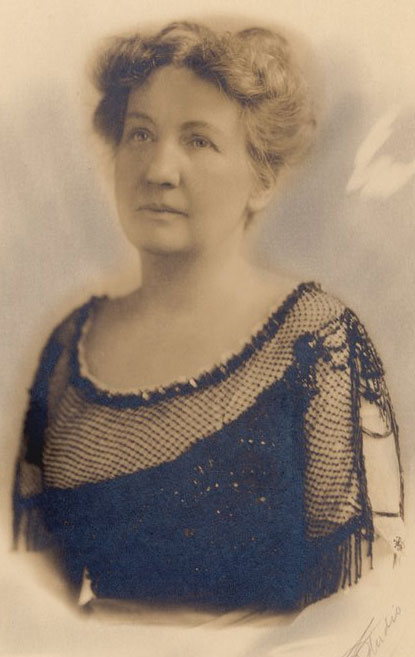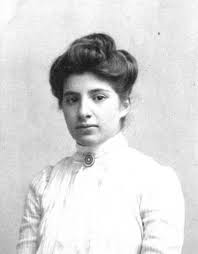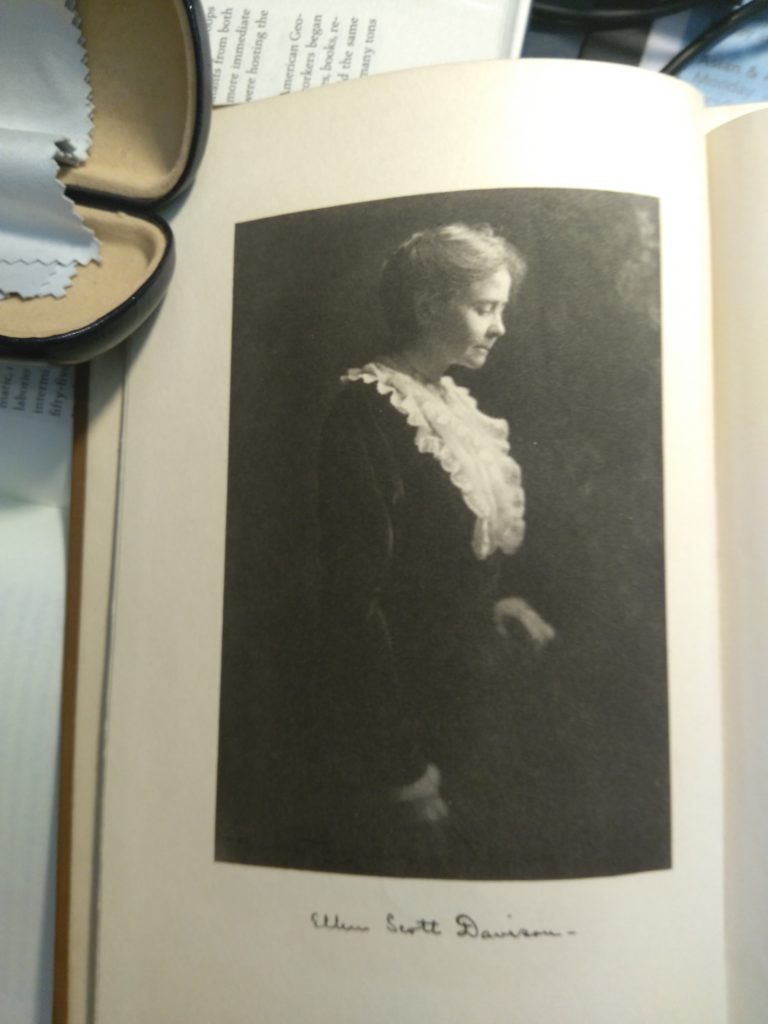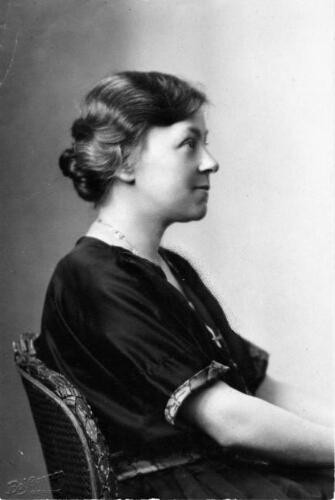by Professor Kimberly Hutchings
Cynthia Enloe encourages us to ask the question ‘where are the women?’, not only because we should acknowledge women’s role in international politics, but also because the question opens up new angles of inquiry and generates insights that we might not otherwise have (Enloe 2014: 1-36). Women’s presence and women’s absence always tells us something, not only about the gender politics of particular places and times, but about the matrix of material and ideological forces and conditions that shape and are shaped by international politics.
Recent work in the history of international thought and in international theory has become increasingly aware of the role of research networks, think tanks and conferences in the development of International Relations as a discipline (Guilhot 2011; Parmar 2015; McCourt 2017). In this respect, historians of IR have become more interested in the role of organizations involved in the emergence of IR as a distinct academic field of study by the middle of the twentieth century, as well as in individuals that were prominent within them. This includes organizations such as the US Council on Foreign Relations or the British Royal Institute of International Affairs, set up in the aftermath of WWI, and figures such as the geographer, Isaiah Bowman (1878-1950), who played an influential role in the former (Smith 2003: 192-200; Ashworth 2013). Bowman also played a major role in the committee that preceded the setting up of the Council on Foreign Relations, the deliberately neutrally labelled ‘Inquiry’ (1917-19), set up by Woodrow Wilson to prepare the US recommendations for the peace settlement (Smith 2003: 113-138).

1878-1950.
Most accounts of the Inquiry stress the role of particular men, such as Bowman or James T. Shotwell (1874-1965). As far as we know, there was only woman member of the Inquiry that went to Versailles, the librarian Florence Wilson, who organized resources for the Inquiry and later became the Head Librarian of the League of Nations Library in Geneva (Huber, Pietsch and Rietzler 2019). For this reason, we may be left with the impression that women had little significant involvement in the Inquiry’s work at all (McCourt 1917). Interestingly, however, according to records from the Inquiry for 1918 although the personnel were male dominated, over and above Wilson, there were at least 28 other white women involved in working for it during the course of that year (Gelfand 1963: 337-342). I was surprised to find this out, by chance, when following a trail researching into Ellen Churchill Semple (1863-1932), a prominent geopolitical thinker, who was invited onto the Inquiry by Bowman (Keighren 2010).

1863-1932
So, what does finding women working for the Inquiry tell us? Much more research would have to be done to answer this question properly, but here are two suggestions. First, it tells us about the opportunities opened to a particular class of educated white women, offspring of the Progressive era, in a field that had yet to be defined and professionalised. It shows that women played a role in laying the groundwork for disciplinary IR, and how that groundwork was tied up with the world of practitioners and policy-making. Second, in drawing attention to women’s presence it also draws attention to women’s absence. Two kinds of absence are potentially significant here: women with relevant expertise whose application to the Inquiry were refused on grounds of ideology, like Emily Greene Balch (1867-1961), who was too sympathetic to the Russian Revolution to be considered. But there is also the significance of the disappearance of women from representation of the Inquiry at Versailles, and their explicit exclusion from the Inquiry’s successor organisation.
Women’s involvement in the Inquiry reflects a peculiar mix of professionalism and amateurism in the approach to understanding international relations at the time. The point of the Inquiry was to do what we would now call ‘evidence-based’ policy-making. That is to say, to produce reports and recommendations based on expert research on key international regions and issues. Inquiry researchers in 1918 were classified according to functions including working on Africa; Austria-Hungary; Far East; Italy; Latin America; Pacific Islands; Russia; Western Asia; Western Europe; Diplomatic History; Economics; General Research; International Law; Maps-Cartography; Reference and Archives. As historians have noted, Maps-Cartography, formed a particularly key function, since much of the Inquiry was concerned with making recommendations for the drawing of new national boundaries and imperial domains in a world after Ottoman, Austro-Hungarian and German empires (Gelfand 1963; Crampton 2006; Sluga 2006).

1881-1972
The Inquiry drew on academic expertise primarily in History and Geography. These disciplines had become increasingly professionalised since the 1870s in the US, consolidating their academic identity though professional organisations and university departments, which became forums for theoretical and methodological debate, including between history and geography (Koelsch 2014). It turned out, however, that the East Coast colleges, from which the majority of Inquiry personnel were recruited, lacked specific expertise in modern history, international law and Europe (including modern European languages) and were over-populated by classicists and medievalists. Amongst this population, in a war context in which younger men were often serving in the armed forces, Bowman and Shotwell extended their recruiting efforts to women they knew with academic expertise. This included those with obviously relevant knowledge, such as Semple or Mary E. Townsend (b. 1884), who became a leading expert on German colonialism (Townsend 1928). It also included less obviously qualified candidates such as Hetty Goldman (1881-1972), an archaeologist, who, for the Inquiry, worked mainly on the issue of Alsace-Lorraine (Gelfand 1963: 54) or Ellen Scott Davison (1864-1921), a medieval historian, who was assigned to the diplomatic history section of the Inquiry (Gelfand 1963: 340). Dorothy Kenyon (1888-1972), a recently qualified lawyer with no previous experience of international law, ended up working on Siam, India and the Philippines (Gelfand 1963: 64). In his Foreword to Davison’s posthumously published Forerunners of St Francis and Other Studies (1927), Shotwell comments: “Here the reader has the full benefit of the strictly scientific method, which always based its detail on original sources and not upon the secondary texts of other historians” (Davison 1927: xv). Where substantive expertise was missing, it seems that the Inquiry put its faith in rigorous method, and expected its members to catch up on relevant knowledge (Gelfand 1963: 32-78).

1864-1921.
Women were included in the Inquiry then for a mixture of reasons. They were included because they had already broken through into the academic world and were part of elite university networks, because there were not enough experts to do the work that the Inquiry required, because of personal connections with particular influential men, such as Bowman and Shotwell, because of their expertise as researchers. For some of them, such as Goldman, the work appears to have been effectively a brief summer job, part of various kinds of war work and essentially a distraction from her work as an archaeologist (Mellink and Quinn 2006). For others, the work fed into a feminist internationalist agenda that structured their later career, as with Kenyon’s subsequent activism and her work on the status of women for both the League of Nations and the UN (Weigand and Horowitz 2002).
The presence of elite white women in the Inquiry, reflecting their presence also in liberal elite networks of the time, suggests a decisive shift towards (some) women’s inclusion in communities of international relations research and policy. Yet when the Inquiry moved to Versailles, and when the Council on Foreign Relations was set up, in part as a response to disappointment with the peace settlement, the women involved in the Inquiry largely disappear. Now you see them, now you don’t. Why? Here one would have to go more deeply into the gendered and racialized assumptions of leading Anglophone analysts of international politics in the early twentieth century, including assumptions of many of the women analysts themselves (Gelfand 1963, Smith 2003, Sluga 2006; Vitalis 2015). As Sluga has shown, in spite of increased visibility of women activists at the Versailles conference, the dominant psychological and civilizational terms of the political imagination of nationality at the time reinforced an international hierarchical race/gender/class order. Whether or not women shared this imagination, which many but not all of them did, it enabled playing off factors of race, gender and class against each other at the discretion of elite white men. Within this order, women’s active participation in knowledge production and political action was permissible to the extent it conformed with racial and class privilege. However, this permission was conditional on the interests of dominant actors, who were also happy to use the trump card of the attitudes to women of racially ‘backward’ cultures to deflect demands for an international investigation on women’s suffrage (Sluga 2006: 118). Women could work at the Inquiry, even in the context of prevailing assumptions about the lack of rational capacity of women, because of their position of privilege and because they had the patronage and permission of men. But those prevailing assumptions meant that permission could be withdrawn as easily as it was given.

1884-1977
References
Ashworth, Lucien M. 2013. ‘Mapping a New World: Geography and the Interwar Study of IR’, International Studies Quarterly, 57, 138-49.
Crampton, Jeremy W. 2006. ‘The Cartographic Calculation of Space: race mapping and the Balkans at the Paris Peace Conference of 1919’, Social and Cultural Geography, 7(5): 731-52
Davison, Ellen Scott. 1927, Forerunners of St Francis and Other Studies. Edited Gertrude R. B. Richards. Foreword, James T. Shotwell. Boston: Houghton Mifflin.
Enloe, Cynthia 2014. Bananas, Beaches and Bases: making feminist sense of international politics Berkeley & LA: University of California Press.
Gelfand, Lawrence E. 1963 The Inquiry: American Preparations for Peace, 1917-19. New Haven and London: Yale University Press
Guilhot, Nicolas (ed.) 2011. The Invention of International Relations Theory: Realism, the Rockefeller Foundation, and the 1954 Conference on Theory. New York: Columbia University Press
Huber, Valeska, Pietsch, Tamson & Rietzler, Katharina. 2019. ‘Women’s International Thought and the New Professions, 1900-1940’, Modern Intellectual History 2019 Online First: doi:10.1017/S1479244319000131.
Keighren, Innes. 2010. Bringing Geography to Book: Ellen Semple and the Reception of Geographical Knowledge. London: I.B. Tauris
Koelsch, William A. 2014. ‘Miss Semple meets the Historians: the failed AHA 1907 Conference on Geography and History and What Happened Afterwards’, Journal of Historical Geography 45: 50-58.
McCourt, David M. 2017. ‘The Inquiry and the Birth of International Relations 1917-19’, Australian Journal of Politics and History, 63(3), 394-405
Mellink, Machteld T. and Quinn, Kathleen M. 2006. “Hetty Goldman 1881-1972” in Getzel M. Cohen and Martha Sharp Joukowsky (eds) Breaking the Ground: pioneering women archaeologists. Ann Arbor: University of Michigan Press.
Sluga, Glenda. 2006. The Nation, Psychology, and International Politics 1870-1919. Basingstoke: Palgrave Macmillan.
Smith, Neil. 2003. American Empire: Roosevelt’s Geographer and the Prelude to Globalization. Berkeley: University of California Press.
Townsend, Mary E. 1928. “Contemporary Colonial Movement in Germany”, Political Science Quarterly 43 (1): 64-75.
Vitalis, Robert. 2015. White World Order, Black Power Politics: The Birth of American International Relations. Ithaca, NY: Cornell University Press
Weigand, Kate and Horowitz, Daniel. 2002. “Dorothy Kenyon: Feminist Organizing, 1919-1963”, Journal of Women’s History, 14 (2): 126-131.


Leave a Reply